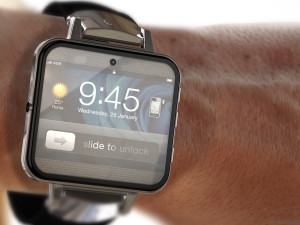
Apple is developing its own smart watch, according to reports by the New York Times and the Wall Street Journal.
Both citing anonymous sources with knowledge of the matter, the reports claim Apple is testing and experimenting with devices made of curved glass that can fit around the wrist and run the mobile iOS platform.
This is not the first time rumours of an 'iWatch' have emerged. Last December, a Chinese gadget news site, Tech.163, reported that Apple was developing a smart watch that connected to Apple devices via Bluetooth.
The New York Times report also noted that while the details are sketchy, it would make sense for Apple to work with Corning, the company behind Gorilla Glass (which is already used on the iPhone). Corning announced last year that it had created a new type of flexible glass, which it dubbed 'Willow Glass'.
Not ahead
Should Apple be pursuing its own version of a smart watch, it will by no means be the first to do so. At this year's Consumer Electronics Show, it was announced that the Pebble smart watch, which received $10.2 million in crowd funding via Kickstarter, was to begin shipping to its project backers in January and would be made generally available in "six to eight weeks".
The Pebble has been pegged as the "first watch built for the 21st century" and features a 1.26-inch e-ink display and can pair with Android and iOS devices via Bluetooth. The device can be used to wirelessly control certain functions on a smartphone, view text messages and manage incoming calls.
Sony has also released its own 'SmartWatch' which can be paired with Android-based smartphones and has an accompanying mobile app, which allows users to manage its apps and settings.
Questions
While some have welcomed the idea of an Apple iWatch, others remain sceptical about how such a device could fit into Apple's overall product strategy. Forbes contributor Ewan Spence notes: "All of this seems to forget one thing. Apple already had a watch, and they've moved on from it already."
Spence is referring to the sixth-generation iPod Nano and its miniature square design which lent itself to being used as a wrist-based media player. Apple has since released the seventh generation iPod Nano and returned to a taller form factor.
Spence argues: "For all the talk of the iPhone being revolutionary when it first launched and changed the smartphone landscape, for me it was more the capture of a lot of disparate ideas from others in the market, and putting them together in an attractive package that people wanted. When I look around the current state of smart watches, from Kickstarter projects like Pebble to the Sony SmartWatch, I don't see a mature technology."
Forrester analyst, Sarah Rotman Epps, who specialises in wearable computing and smartphones, says an iWatch may not be too far-fetched. "Apple's certainly made a lot of hiring in that area.
"Over the long-term, wearable computing is inevitable for Apple; devices are diversifying and the human body is a rich canvas for the computer. But I'm not sure how close we are to a new piece of Apple hardware that is worn on the body."
Google has also been publically experimenting with wearable computing in the form of its Google Glass project. The heads-up display and augmented-reality glasses have already been previewed to some partners, and developers were able to place orders for the device at the Google I/O conference last year. Google has also indicated the final product could be made available to consumers as soon as 2014.
Last year, Apple also filed for patents for a head-mounted display device. According to the New York Times report, the patent included displays that sit over the eye and stream information to the retina. The patent stated the device could include a second display, processor, memory and a user interface.
Possible applications included gaming and entertainment, but also stretch to use in healthcare, such as providing surgeons with additional information while they work, or providing military personnel with relevant tactical information.
The wearable computing space is clearly heating up, as Microsoft also filed a patent for its own augmented reality glasses, which surfaced in November last year. Microsoft's glasses-based heads-up display system is, however, focused around providing supplementary information for users during live events, rather than for use in normal everyday life.
Photo: Conceptual design by Antonio DeRosa of ADR Studio.
Share